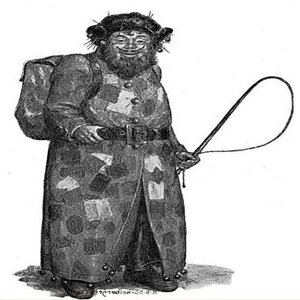
Belsnickel
CBUB Wins: 0
CBUB Losses: 4
CBUB Ties: 0
Win Percentage: 0%
Added by: Mercenaryblade
Read more about Belsnickel at: Wikipedia
Official Site: Public Domain
Belsnickel (also Belschnickel, Belznickle, Belznickel, Pelznikel, Pelznickel, from pelzen (or belzen, German for to wallop or to drub ) and Nickel being a hypocorism of the given name Nikolaus) is a crotchety, fur-clad Christmas gift-bringer figure in the folklore of the Palatinate region of southwestern Germany along the Rhine, the Saarland, and the Odenwald area of Baden-Württemberg. The figure is also preserved in Pennsylvania Dutch communities and Brazilian-German communities.
Belsnickel is related to other companions of Saint Nicholas in the folklore of German-speaking Europe. He may have been based on an older German myth, Knecht Ruprecht, a servant of Saint Nicholas and a character from northern Germany. Unlike those figures, Belsnickel does not accompany Saint Nicholas but instead visits alone and combines both the threatening and the benign aspects which in other traditions are divided between the Saint Nicholas and the companion figure.
Belsnickel is a man wearing furs and sometimes a mask with a long tongue. He is typically very ragged and disheveled. He wears torn, tattered, and dirty clothes, and he carries a switch in his hand with which to beat naughty children, but also pocketsful of cakes, candies, and nuts for good children.
A first-hand 19th-century account of the "Beltznickle" tradition in Allegany County, Maryland, can be found in Brown's Miscellaneous Writings, a collection of essays by Jacob Brown (born 1824). Writing of a period around 1830, Brown says, "we did not hear of" Santa Claus. Instead, the tradition called for a visit by a different character altogether:
CBUB Match Record:
No Regular Play Records Available
Fantasy Teams Season 13 Record:
View the historical team line-up
| Result | Opponent | My Score | Their Score | |
|---|---|---|---|---|
| Loss | The Crypt Keeper | 3 | to | 11 |
| Loss | The Creeper (Jeepers Creepers) | 4 | to | 6 |
| Loss | Dracula | 4 | to | 6 |
| Loss | The Djinn | 5 | to | 6 |
